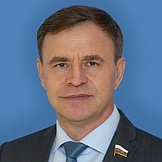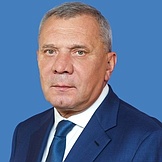Regional flags and emblems


PROFILE
The Arkhangelsk Region includes the territory of another constituent entity of the Russian Federation – the Nenets Autonomous Area.
Established 23 September 1937
Capital Arkhangelsk
The Arkhangelsk Region is part of the Northwestern Federal District
Area 413,100 sq km
Population (without counting the Nenets Autonomous Area) – 947 200 (2025)
Ethnic groups
(2020 National Census,%)
Russian – 97,44
Other – 2,56
Administrative divisions (2024)
Municipal areas – 4
Municipal districts – 15
City districts – 7
Rural towns – 6
Rural districts – 35
Geography and climate
The Arkhangelsk Region lies in the northern section of the Eastern European Plain on the shores of the White, Barents and Kara seas. It includes Novaya Zemlya, Franz Josef Land, Solovetsky and other islands.
The region borders on the Republic of Karelia, the Komi Republic, as well as the Kirov and Vologda regions.
The Arkhangelsk Region has numerous lakes and rivers. Almost all rivers, except the Ileksa River and several nearby rivers, are part of the Arctic Ocean basin. The continental watershed between the basins of the Arctic and Atlantic oceans is located in the region’s westernmost section. The largest local rivers include the Severnaya Dvina River with the Vychegda, Pinega and Vaga tributaries, as well as the Onega, Mezen and Pechora Rivers. The region has about 2,500 lakes, most of which are located in the Onega River basin and in the most northeasterly areas of the region. The largest lakes include Lacha, Kenozero and Kozhozero.
The climate is Arctic, sub-Arctic and temperate, but becomes more continental as you move from north to south and from west to east, deeper inside the continent. January temperatures average –6.5° C, July temperatures average + 18.0°C. Mean precipitation in January is 42 mm, compared to 54 mm in July. The vegetation period is 60 days in the far northeast and up to 150 days in the south. The frost-free period is 30–130 days.
Local vegetation includes coniferous forests (fir-trees and pines). The taiga transitions to forest-tundra and tundra in the north.
Soils: tundra-gley, tundra-marsh, peat-gley and low-podzol.
In all, it has 34 nature sanctuaries and 66 natural landmarks, Pinega Nature Reserve, Kenozero National Park, Russian Arctic National Park and Onezhskoye Pomorye National Park are located in the Arkhangelsk Region.
Government
The legislative branch is represented by the Arkhangelsk Region Assembly of Deputies which is the permanent representative and only body of legislative authority in the region.
The Arkhangelsk Region Assembly of Deputies has 47 deputies, elected for five years, with 24 of them running in single-member constituencies and the other 23 in the single electoral district in proportion to the number of votes cast for lists of candidates nominated by electoral associations.
The incumbent Arkhangelsk Region Assembly of Deputies was elected in September 2023. Its term expires in September 2028.
The system of executive bodies of state power of the Arkhangelsk Region, which is an interconnected set of state authorities in the Arkhangelsk Region, endowed, in accordance with the established procedure, with state powers of an executive and administrative nature, includes the Governor of the Arkhangelsk Region, the Government of the Arkhangelsk Region, the Administration of the Governor and the Government of the Arkhangelsk Region, the financial body of the Arkhangelsk Region, and other bodies of executive authority of the Arkhangelsk Region, as well as regional branches of the executive bodies of state power in the Arkhangelsk Region.
The Government of the Arkhangelsk Region is the supreme permanent collegial body of executive authority of general competence. It is formed by the Governor of the region. The Governor of the Arkhangelsk Region appoints the First Deputy Governor of the Arkhangelsk Region who also chairs the Government of the Arkhangelsk Region, First Deputy Governors, Deputy Governors, and the head of the financial body of the Arkhangelsk Region in coordination with the Regional Assembly.
The Governor of the Arkhangelsk Region is the region’s highest-ranking official, who runs the executive branch of the Arkhangelsk Region. He is elected for five years by Russian citizens who permanently reside in the region. The term of the incumbent Governor expires in September 2025.
Economy and natural resources
The Arkhangelsk Region ranks among the Russian Federation’s most heavily industrialised regions. The region has become a venue for large-scale investment projects. A huge shipbuilding cluster is being established in the region. Private farms are coming back, and new production facilities in the bioenergy and prefab housing industries are being set up.
The wood-processing and pulp-and-paper industries continue to expand. The Arkhangelsk Pulp and Paper Mill and the Kotlas Pulp and Paper Mill also work with investment capital, allowing them to master the production of new goods and to expand output every year.
Machine-building, shipbuilding and ship-repair companies are the main regional taxpayers. These companies manufacture warships and civilian vessels, oil and gas production equipment, as well as machinery for the timber and wood-processing industries.
Agricultural development priorities are milk and crop production. Main areas of focus in the latter are fodder for cattle (an insignificant amount of grain crops, annual and perennial grasses), and seed-grade and food-grade potatoes.
The territorial State Balance lists two carbonate ore deposits for the glass and pulp-and-paper industries (Shvakinskoye and Ust-Pinezhskoye); two flux limestone deposits (Savinskoye and Shvakinskoye); one dolomite deposit for the metals industry (Yemetskoye); two mineral paint deposits (Konoshskoye and Sinegorskoye); one iodide deposit (Severodvinskoye); three carbonate ore deposits for the liming of acid soils (Kilinskoye, Obozyorskoye and Rodnichnoye); peat deposits.
It is impossible to expand industrial production without a modern transport system. Renovation of the M8 federal motorway in the Arkhangelsk Region, bridge repairs and the improvement of city streets are called on to reduce transport outlays, expand trade, make the transport system more comfortable and make life safer for the region’s residents.
Culture and tourism
The region has many special spots, including mighty rivers and sparkling clean lakes, enchanting northern forests and the austere White Sea, snow-bound Pomor villages, old churches and towering monasteries.
Arkhangelsk blends historical architecture with new developments. Some Solombala districts still feature wooden walkways like in the 19th century. The city embankment offers mesmerizing views of the Severnaya Dvina River, and the Chumbarov-Luchinsky pedestrian avenue is lined with wooden mansions that belonged to local merchants.
The open-air Malye Korely Museum of Wooden Architecture is located not far from Arkhangelsk and features hundreds of wooden buildings, including churches, mills, granaries and peasant huts, relocated here from all over the region.
Kargopol, an ancient city famous for its well-proportioned churches and traditionally laidback Russian lifestyle, is located in the region’s south. Another city, Solvychegodsk, is renowned for its churches and curative mineral springs.
The nature of the North has a uniquely restrained and quiet beauty. One can feel the soul of ancient Rus, known only from fairy tales and sagas, lurking in the clear lakes and ancient forests of the Kenozerye and Pinezhye areas. A trip to Kii Island in the White Sea offers a break from the hustle and bustle of civilisation.
The Solovetsky Islands Archipelago, the gem of the Russian North, features churches and hermit communities for monks, old stone mazes and sparkling Lake Svyatoye.
No matter the season, there is always a lot going on in the Arkhangelsk Region. Tourists can attend folk festivals, visit the Pomorye Fair and take in the best European performers.
Every winter, Kargopol hosts the annual Crystal Bells bell-ringing festival, the only one in Russia. Malye Korely, Ustye and Kargopol host big celebrations for Christmastide, Orthodox Christmas and New Year’s Eve. Each winter, the region hosts major skiing and bandy competitions.
After the long northern winter, local people go all out for the Maslenitsa holiday. Arkhangelsk also hosts the Big Easter Art Festival. And every April, the region’s capital hosts the European Spring and Arkhangelsk Blues international festivals involving world-class performers.
Arkhangelsk has been hosting the International Festival of Street Theatres, the main local event of the summer season, for the past 20 years. Local squares, parks and roads swarm with the best European street performers, clowns, musicians, jugglers and magicians.
Lovers of nature, music and the peculiar Pomor lifestyle should attend the Taibola art festival on the White Sea coast. Every autumn, the region hosts fairs, harvest celebrations and folk-art festivals. For a taste of history, you can participate in the ancient traditions of Pomor New Year, like wreath making and launching burning rafts on the river.
Arkhangelsk annually hosts the Vladimir Rezitsky international jazz festival, also known as the Days of Jazz, featuring the best Russian jazz musicians.
The Arkhangelsk Region is a great place for cycling, canoeing, catamaraning, rafting, kayaking, hunting, fishing, hiking, spelunking and cross-country skiing. Advanced skiers will enjoy the well-equipped stadiums and downhill skiing courses equipped with lifts.



